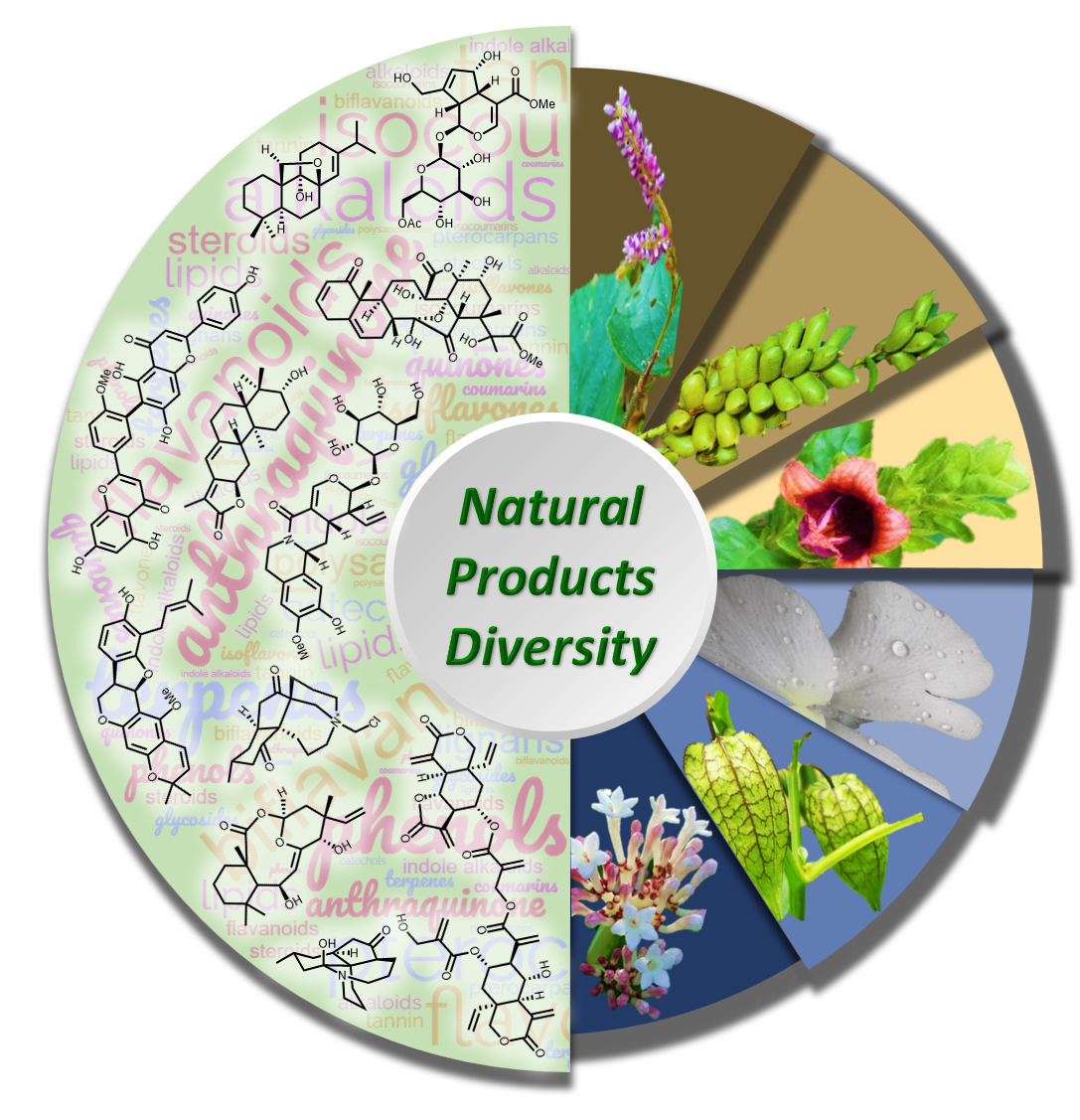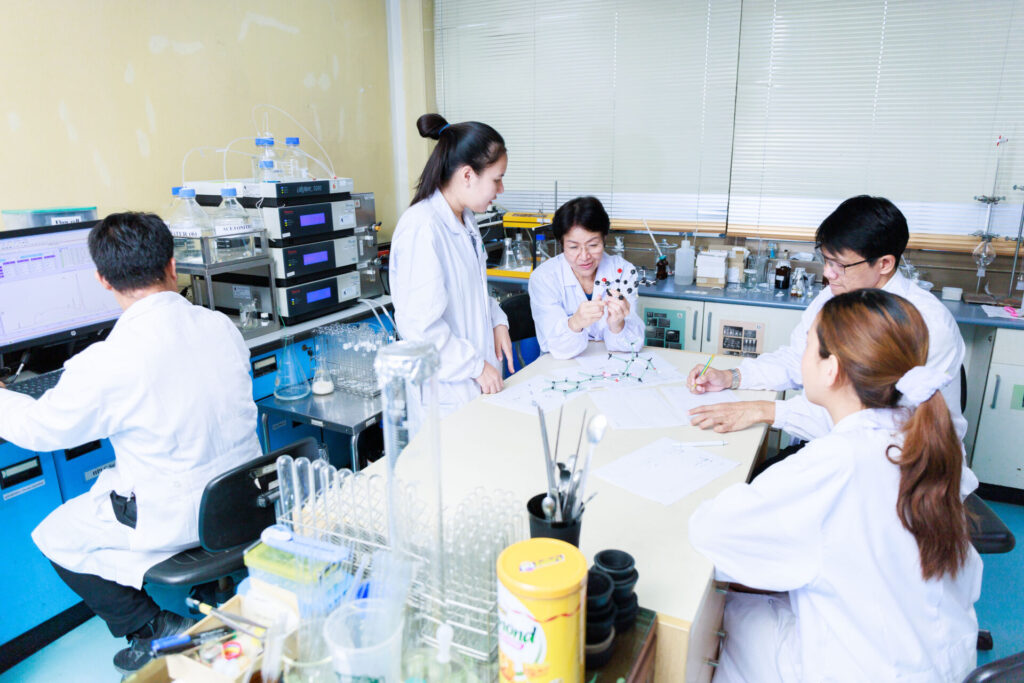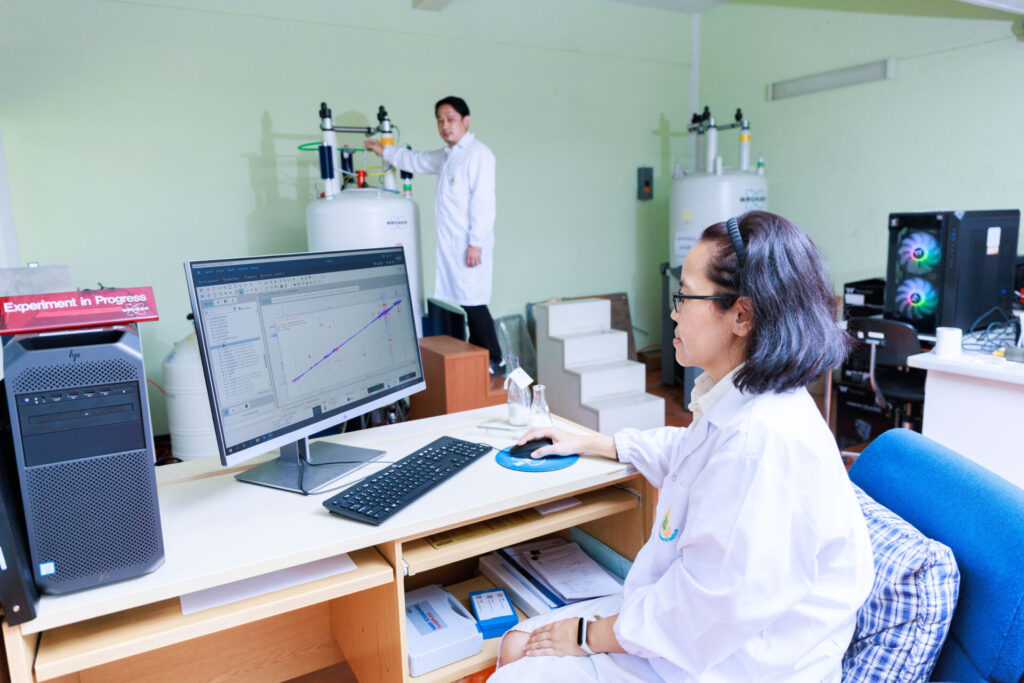Chemical Constituents of Thai Medicinal Herbs
Plants have served as major sources of structurally diverse and complex natural products unmatched even by the most imaginative minds. While many have received attention for their medicinal use, chemotaxonomic research on a plethora of genera and species remain largely quiescent; that is, a still relatively vast number of natural products await discovery. Thailand, with its tropical location and climate, has been endowed with a wealth of natural resources and abundant biodiversity.

On the basis of folk medicinal wisdom, which has utilized local herbs as medicine for centuries, our laboratory has embarked on systematic chemotaxonomic approach for chemical constituents of these herbs spanning from GPS-recorded sample collection, modern and greener isolation process, bioassay-guided fractionation, compound identification, and biological evaluations. Such approach has led to natural products with unprecedented framework while also linking the folk wisdom and the chemical knowledge of bioactive constituents from locally used medicinal plant extracts.

Some herbal plants have also been investigated following their bioassay-guided fractionation to yield pure compounds. Triterpenes from Drypetes hoaensis, known locally as Lhong-Lai, exhibit potent cytotoxicity against hepatocarcinoma HepG2. Cardinane sesquiterpenes from Alangium salviifolium, also known as Prooh, and prenylated acridones from Atalantia monophylla, or Manow Peeh, are aromatase inhibitors which can lower estrogen in some breast cancer patients. Anti-oxidant and cytotoxic flavonoid trans-stilbenes were isolated and characterized from Macaranga siamensis, or Tao Siam.
Currently, our laboratory has investigated the chemical constituents of the following families of plants and herbs. Ferns and lycophytes are the main sources of lycopodium alkaloids, flavonoids, and triterpenoids some of which have been reportedly employed to treat non-communicable diseases such as cancer, dementia, osteoporosis, and allergy. The genus Kaempferia, with over 30 species in Thailand and in the same family as ginger, has furnished diterpenoids with novel skeletons and biological activities. The rhizome, in particular, has provided new compounds with potent anti-inflammation or cytotoxic activity against cancer cells. Interestingly, plants in the genus Barleria in the Acanthaceae family are reportedly a rich source of iridoids, flavonoids, and glucosides and have been used medicinally to treat or alleviate the conditions of diabetes, fever, coughing, aphthous ulcer or canker sores, and skin allergies.







